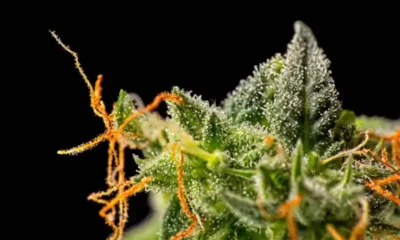Connect with us
Published
9 months agoon

It’s no secret that there are a number of biodegradable plastic alternatives out there already, including a number of hemp-based options, but now U.S. leaders are making an extra push to adopt hemp-based plastic alternatives, along with two other other cannabis-related efforts.
A key House committee has called on federal officials to begin the process of developing hemp-based plastic alternatives, alongside provisions to create a device to detect cannabis-impaired driving and aiming to combat illegal cannabis grows on public land, Marijuana Moment reports.
The provisions were included in reports attached to annual spending legislation, which made its way through the House Appropriations Committee earlier this week.
The hemp-based plastic provision is included in the report for the Fiscal Year 2024 Interior, Environment and Related Agencies appropriations bill, which examines the “potential need for dependable bio-based and U.S.-grown plastic alternatives.” The provision also directs the Environmental Protection Agency (EPA) to provide a briefing on efforts exploring alternatives to the polymers currently on the market, naming U.S.-based hemp as one option.
It additionally prompts the agency to look into how these alternatives could be used as a cost-efficient alternative, when it comes to government-produced or funded materials, within the 180 days of the bill’s enactment.
Another section of the same report expresses that the committee is aware of trespassers illegally growing cannabis on California’s public lands, adding that these illicit activities have harmful impacts to the public, water, soil and wildlife.
“The Committee supports Forest Service efforts to develop tools to detect and eradicate grow sites,” the report continues. “The Committee directs the Forest Service and the [Bureau of Land Management] to continue to cooperate with State, local, and Tribal governments on survey, reclamation, and prevention efforts to the maximum extent possible.”
A separate report from the Transportation, Housing and Urban Development, and Related Agencies (THUD) bill makes a third mention of cannabis, specifically as it pertains to impaired driving. The report says that the committee continues to support the development of an “objective standard” for measuring cannabis impaired driving and a corresponding sobriety test “to ensure highway safety.”
The report also directed the Department of Transportation to provide an updated briefing to the committee within 60 days of the act’s enactment, examining interim progress on the directive.
These issues are nothing new in the cannabis industry.
When it comes to hemp-based plastic, the first iteration of the alternative dates back to the 1940s. One of the first major prototypes for hemp plastic was featured in a 1941 prototype from Ford. The car’s body was made from a plastic composite consisting of 70% hemp fiber, mixed with straw and sisal. It was meant to show the potential of hemp, combined with technological innovations at the time. Ford reportedly demonstrated the strength of the material by beating the car with a club, resulting in no dents to the body.
In more recent news, a recent Canadian study demonstrated the potential for a new series of hemp plastics. Researchers noted that, even though the material didn’t meet benchmarks in conventional plastics, it’s still stronger and more malleable than other plant-based materials on the market and sufficient quality for a number of applications. Plastic is just one of many alternative applications for hemp — the plant material has historically been used for a number of materials, though it appears we’re currently in the midst of a global renaissance, with more applications continuing to emerge.
The pervasive presence of illegal cannabis grows in the Golden State is also nothing new. According to data from the California Department of Cannabis Control, the state seized more than 66,000 pounds of cannabis tied to the illicit market for the second quarter ending June 30. The statewide retail value of the illegal product ($109.2 million) amounts to a 104% increase from the previous quarter.
Once more, a number of cannabis breathalyzers have been in development since adult-use cannabis first began hitting the states. The problem of detecting current cannabis impairment in drivers has persisted, as standard testing only detects THC metabolites rather than indicating if a person is impaired at that moment — meaning someone could test positive for THC and potentially get a DUI even if they are not currently impaired or used cannabis days or even weeks prior.
While cannabis breathalyzers are making some strides, the main issues are that they typically only detect recent flower, so someone high on edibles could technically pass the test. A recent federal study also nodded to the difficulty of developing such technology, with findings that “do not support the idea that detecting THC in breath as a single measurement could reliably indicate recent cannabis use,” according to authors.


Despite City Efforts, Hemp Shops Posing as Dispensaries Prevail in Las Vegas


Cannabis Community, Investors React to DEA Decision To Reschedule


Georgia Governor Signs Bill Establishing Licensing Requirements To Grow Hemp


Study: Psilocybin Enhances Meditation


Ohio GOP Lawmakers Debate Adult-Use MJ Priorities, Eye June for Regulation Approval


Taylor Swift Puts Narcotics Into All of Her Songs on ‘The Tortured Poets Department’
